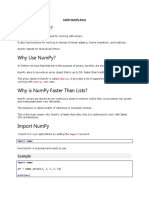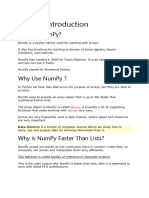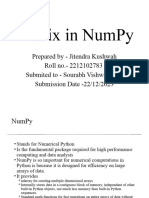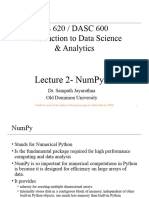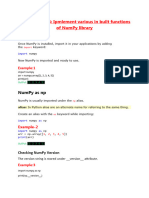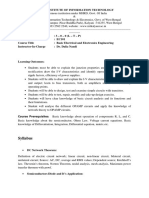0% found this document useful (0 votes)
8 views7 pagesNum Py 1
NumPy is a Python library designed for efficient array manipulation and numerical computations, created in 2005 by Travis Oliphant. It offers various array types, including 0-D, 1-D, 2-D, and 3-D arrays, and is optimized for performance, being significantly faster than traditional Python lists. NumPy also provides functionalities for linear algebra, Fourier transforms, and matrix operations, making it essential for data science applications.
Uploaded by
SushiCopyright
© © All Rights Reserved
We take content rights seriously. If you suspect this is your content, claim it here.
Available Formats
Download as PDF, TXT or read online on Scribd
0% found this document useful (0 votes)
8 views7 pagesNum Py 1
NumPy is a Python library designed for efficient array manipulation and numerical computations, created in 2005 by Travis Oliphant. It offers various array types, including 0-D, 1-D, 2-D, and 3-D arrays, and is optimized for performance, being significantly faster than traditional Python lists. NumPy also provides functionalities for linear algebra, Fourier transforms, and matrix operations, making it essential for data science applications.
Uploaded by
SushiCopyright
© © All Rights Reserved
We take content rights seriously. If you suspect this is your content, claim it here.
Available Formats
Download as PDF, TXT or read online on Scribd
/ 7









